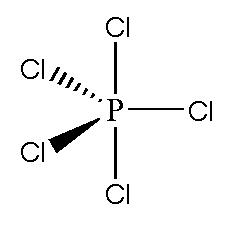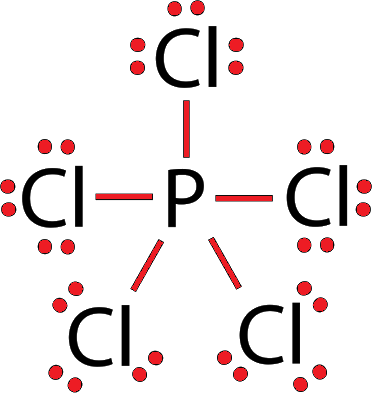PCl5 Hybridization - Lewis Structure, Structure, Geometry FAQs
Hybridization is defined as the formation of a new degenerate orbital by mixing two atomic orbitals having the same energy. These hybrid orbitals have different shapes and energies than the original atomic orbitals. which is used to explain the bonding and geometries.
In this article, we will cover the concept of Hybridization. This concept falls under the broader category of Chemical Bonding which is a crucial chapter in Class 11 chemistry. It is not only essential for board exams but also for competitive exams like the Joint Entrance Examination (JEE Main), National Eligibility Entrance Test (NEET), and other entrance exams such as SRMJEE, BITSAT, WBJEE, BCECE, and more.
NEET 2025: Mock Test Series | Syllabus | High Scoring Topics | PYQs
JEE Main: Study Materials | High Scoring Topics | Preparation Guide
JEE Main: Syllabus | Sample Papers | Mock Tests | PYQs
- PCl5 Hybridization
- Some Solved Examples
- Summary
PCl5 Hybridization
Compound PCl₅ comprises of phosphorus and chlorine in the ratio of P: Cl = 1:5. PCl₅ can exist in both solid and gaseous states but is generally found in gaseous states. In a solid state, it will be in charged form. As we know phosphorus belongs to the 3rd period in the modern periodic table. In the third period, there are s, p, and s subshells are present. So in PCl₅ molecule hybridization of p will be sp3d. This hybridization of p in PCl₅ is possible due to the presence of d orbital in phosphorus. If we talk about energy then for the 15th group elements like nitrogen, phosphorous (p), arsenic (Ar), antimony (Sb), and bismuth ( Bi) will be in the order:-
The energy of 3d ~ energy of 3s ~ energy of 3p as well as e energy of 3d ~ energy of 4s ~ energy of 4p.
Because of the above reason hybridization of 3rd-period elements include 3d, 3p, and 3s or 3d, 4s, and 4p ( as the energy of s and p is equivalent to d) and there is also an energy difference between 3p and 4s orbital which led to no hybridization of an element with 3p, 3d and 4s.
Also read -
- NCERT Solutions for Class 11 Chemistry
- NCERT Solutions for Class 12 Chemistry
- NCERT Solutions for All Subjects
PCl5 hybridization
The hybridization of PCl₅ is sp3d.
PCl5 shape
PCl5 shape is trigonal bipyramidal.
PCl5 geometry
The molecular geometry of is PCl5 trigonal bipyramid.
PCl5 structure

PCl5 lewis structure
Some of our important hybridization including s, p, and d orbital are given below:-
• Shape of molecules | • Types of hybridization | • Atomic orbitals | • Example |
| dsp2 | d+s+p(2) | [Ni(CN)4]2– |
| sp3d | s+p(3)+d | PCl5 |
| sp3d | s+p(3)+d | BrF5 |
| Sp3d2, d2sp3 | s+p(3)+d(2), d(2)+s+p(3) | [CrF6]3–, [Co(NH3)6]3+ |
Also read :
- NCERT notes Class 11 Chemistry Chapter 4 Chemical Bonding and Molecular Structure
- NCERT solutions for Class 11 Chemistry Chapter 4 Chemical Bonding and Molecular Structure
- NCERT Exemplar Class 11 Chemistry Solutions Chapter 4 Chemical Bonding and Molecular Structure
Some Solved Examples
Q- 1 Is PCl6 hybridization possible?
Ans: PCl6 hybridization will not be possible because of the presence of only 5 valence electrons in the case of phosphorus. The valency of phosphorus is -3 as it will accept 3 electrons from any other elements to complete its octet and be stable. So PCl6 is not possible as the formation of PCl6 phosphorus must contain 6 valence electrons then it can form 6 bonds which include coordinating bonds or covalent bonds. But it is not possible in group 3 elements. Because in the modern periodic table group numbers represent the valency and no. of valence electrons in any elements we can get through its electronic configuration. And in 3rd period elements here in the case of phosphorus, there are only 5 valence electrons available.
Q – 2 Explain the hybridization involved in phosphorus pentachloride.
Ans: The hybridization involved in P of PCl₅ is 5 sp³d.
Q –3 Explain the formation of PCl₅?
Ans: Here we know that outermost electrons or valence electrons are 5 in the case of phosphorus and the orbits are 1s, 3p, and 1d i..e.. available for hybridization. And the hybridization of PCl₅ will be sp3d and we will get a set of 5 hybrid orbitals. So we can represent its hybridization as 5 sp3d and the no. 5 also represents us about its shape as its shape has five corners and i..e.. also true for trigonal bipyramidal. And the shape of PCl₅ will be trigonal bipyramidal, we are helpful for VSEPR theory due to which we can get to know about the molecular shape and its hybridization.
As we know trigonal bipyramidal is a closed figure so there must be bond angles we can discuss and the amazing fact is that not all the bond angles in PCl₅ hybridization i..e.. trigonal bipyramidal is the same, and in this geometry, we can also notice that orbitals of phosphorus i.e. in hybridization and will become sp3d orbital will overlap with p orbital of chlorine and this results in the formation of p-cl bond which counts for 5 in number.
Q –4 PCl₅ shape according to VSEPR theory?
Ans: According to VSEPR theory shape of PCl₅ is trigonal bipyramidal and its hybridization in the gaseous state is sp³d but in solid state its hybridization will be changed to sp³d² and sp³.
Q-5 How many types of bonds are formed in PCl₅?
Ans: Types of a bond will be 2, there are two types of bond that will be formed during molecule formation i.e. PCl₅ formation and the bonds are equatorial bonds and the other one is axial bonds. The number count for the axial bond is 2 and the number count for the equatorial bond is 3. And these both types of bonds are p – cl bonds indicating that there are 3 p – cl bonds in the equatorial plane and 2 p – cl bonds lie in the axial plane.
Q - 6 What are the bond angles of both equatorial bonds and axial bonds?
Ans: • Equatorial bonds i.e. all 3 p – cl bonds which lie in the same plane. They are arranged by making an angle of 120°.
• Axial bond i..e.. all 2 p – cl bonds in which one p – cl bond lies above the equatorial surface and the other one p – cl bond lies below the equatorial plane. These both p – cl bonds make an angle of 90° with p – cl bonds situated in an equatorial plane or equatorial bond. The angle between both p – cl bonds in axial position is 180° as they are situated just opposite to each other
Q –7 Which bond is weaker equatorial or axial?
Due to repulsive interaction caused by the equatorial bond pair towards the axial bonds, the axial bond pairs are slightly longer to reduce repulsive interaction, but due to increasing its length its strength reduces ( i..e.. length of bond is inversely proportional to the strength of bond ) and so axial bonds are slightly weaker than equatorial bond due to more repulsive interaction from equatorial bond pairs.
Q – 8 Hybridization of PBr₅ and PCl₅?
In a gaseous state phosphorous of both PBr₅ and PCl₅ exists in sp³d hybridization.
But in solid state p of PCl₅ exists in both sp³d² and sp³ hybridization state, while phosphorous i..e.. p of PBr₅ will exist in sp³ hybridization only.
Q-9 What is the geometry of PCl4+?
In PCl4+, there is a 4 p – cl bond and no lone pair.
So the geometry of pcl4+ will be tetrahedral.
Read useful topics:
Summary
PCl5 has sp3d hybridization and trigonal pyramidal geometry and there is no lone pair in PCl5 so its is Trigonal Pyramidal.
NCERT Chemistry Notes :
Also Read
19 Feb'25 11:09 AM
07 Feb'25 10:38 AM
07 Feb'25 10:22 AM
07 Feb'25 10:18 AM
07 Feb'25 10:16 AM
07 Feb'25 10:11 AM
18 Oct'24 05:56 PM
18 Oct'24 10:52 AM
10 Oct'24 12:05 AM
09 Oct'24 11:41 PM
